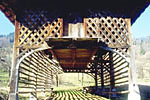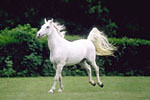The Heritage
The influence of the protestant movement in Europe was also strong in Slovenia. The first two books in Slovene, written by Primož Trubar, appeared in 1550. This initiated the awakening of other writers and poets. Among the latter, the most famous is France Prešeren in the 19th century. The Austrian Empress Maria Theresa's educational reforms of the 18th century had produced a reading public for his poems. Writing verses to his beloved Julia, his muse, who rejected him, Prešeren created one of the greatest masterpieces of Slovenian literature. One of his poems was chosen as the Slovenian national anthem. Novels followed in the late 1800s. The luminaries of the Modern school, the novelist Ivan Cankar and the poet Oton Župančič, were the first of a long line of politically influential writers. The poet Edvard Kocbek was among the most notable during and after World War II. Even today, Slovenian authors in translation meet a wide response abroad, especially the works of Tomaž Šalamun, Drago Jančar, Aleš Debeljak and Brina Svit. Literary works in many international languages prove that even the smallest cultures can produce quality works and also contribute to contemporary global literary trends.

Urban culture has developed in Slovenia in the last two centuries, as well as a gradual evolvement of fundamental institutions such as the National Museum and the Slovenian Philharmonic Orchestra. Nowadays, Slovenia has many theatres, cinemas, libraries and educational facilities, and is well known abroad through its cultural exports.

Traditional crafts have always provided people with household utensils, personal objects and things needed at work. Even today, traditional crafts hold a significant place in Slovenia, for they have an important place in the Slovenian cultural heritage - from shoemaking to pottery, wooden utensils, and lace. Bee-keeping also has a long and rich tradition in Slovenia. Creativity and artistry can be seen in the beehives that in Slovenia are much more than homes for bees - they represent folk art. Decorated bee-hive panels give an interesting impression of people's creativity. This is not only a matter of the unique form of rural crafts, but an illustration of people in their environment. The oldest surviving bee-hive dates back to 1758.

There is another Slovenian speciality which you cannot find anywhere else in the world - the kozolec, a kind of hayrack. It is a free-standing, permanent structure, usually of oak, with open sides, but covered with a roof, used for drying and storing hay. The form and type of hayrack depend on the region: in the mountains the hayracks are smaller; in areas with more rainfall, they are better roofed; on flat lands they are longer.
Since the 4th century, several floating mills have stood on the banks of the Mura River and even today they enable the ecological use of natural energy in the Prekmurje region. They remain exceptional inventions and cultural acquisitions. Also, pottery is one the most widespread crafts in Prekmurje, despite the fact that the number of potters is decreasing.

Lipizzaners are a Slovenian species of riding horse originating in the village of Lipica, and known throughout the world. The foals are either black or grey, but the adult animals usually have white coats. Lipizzaners are sociable and intelligent horses, robust yet graceful. They have been called the finest riding horses in the world.
